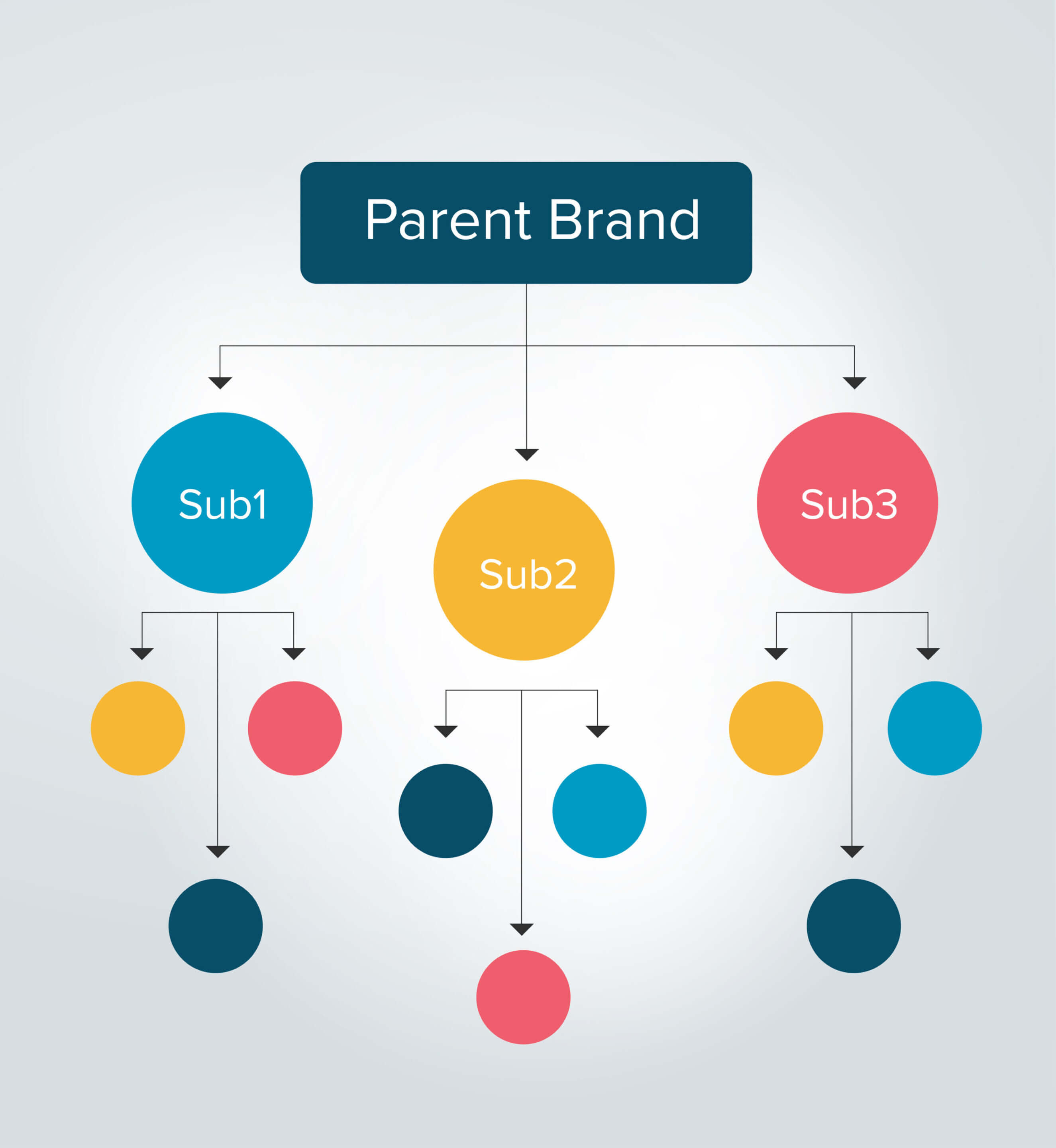When it comes to building a strong brand, creating a brand family is a popular strategy. A brand family is a group of brands that are related to each other in some way, whether through their product offerings, their target audience, or their visual identity. Organizing your brand family is essential to ensure that each brand in the family has a distinct identity while still contributing to the overall strength of the family. In this blog post, we’ll explore the different structures you can use to organize your brand family.
1. Monolithic Branding
In a monolithic branding structure, all the brands in the family share the same name, logo, and visual identity. Each individual brand is identified by a sub-brand or descriptor that appears alongside the parent brand. Companies that have a dominant brand in the market and want to leverage that brand equity for their other product lines often use this structure. Some examples of companies that use monolithic branding are Google, Apple, and Coca-Cola.
Pros:
- High brand recognition and equity
- Easy to introduce new products or services
- Cost-effective marketing and advertising
Cons:
- Difficult to differentiate between individual products or services
- Negative reputation or backlash can affect the entire brand family
- Risk of losing market share if the dominant brand loses popularity
2. Endorsed Branding
In an endorsed branding structure, each individual brand in the family has its own name, visual identity, and product offerings. However, each brand is endorsed by the parent brand, which lends its reputation and credibility to the individual brands. Companies that have a strong parent brand that can benefit their other product lines often use this structure. Some examples of companies that use endorsed branding are Marriott Hotels, Virgin Group, and Nestle.
Pros:
- Each brand has its own identity and target audience
- The parent brand provides credibility and trust
- Allows for individual brand innovation and experimentation
Cons:
- Can be expensive to market and promote each brand separately
- Risk of diluting the parent brand’s reputation if individual brands perform poorly
- Limited opportunity for cross-promotion or product bundling
3. Hybrid Branding
In a hybrid branding structure, some brands in the family use monolithic branding, while others use endorsed branding. Companies that have a mix of dominant brands and niche brands within their portfolio often use this structure. Some examples of companies that use hybrid branding are Procter & Gamble, Unilever, and Johnson & Johnson.
Pros:
- Provides flexibility to cater to different audiences and product categories
- Maintains the parent brand’s credibility while allowing individual brands to shine
- Opportunities for cross-promotion and product bundling
Cons:
- Can be complicated to manage multiple branding structures
- Risk of diluting the parent brand’s reputation if individual brands perform poorly
- Limited opportunity for individual brand innovation and experimentation
In conclusion, organizing your brand family is essential to ensure that each brand has a distinct identity while still contributing to the overall strength of the family. Whether you choose monolithic branding, endorsed branding, or hybrid branding, each structure has its pros and cons, and the best structure for your brand family will depend on your company’s goals and objectives. By carefully considering the different structures and their implications, you can build a strong and cohesive brand family that resonates with your target audience and drives long-term success.

